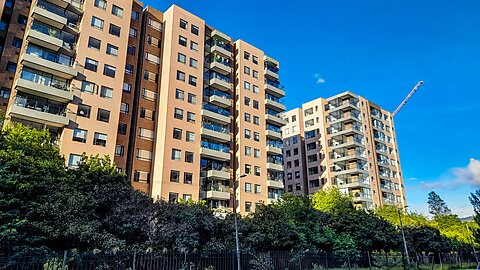The federal low‐income housing tax credit (LIHTC) is an awful program for the reasons discussed in this 2017 study. I’ve recently focused—here, here, and here—on the ungodly complexity of the LIHTC, which benefits no one except the lawyers.
Complexity is one reason for the high costs of apartment buildings developed with LIHTC subsidies. The Wall Street Journal recently examined the high costs of subsidized housing, as excepted below.
The issue is salient because the tax bill before Congress would expand the LIHTC, and there is bipartisan support for new subsidies based on the LIHTC’s critically flawed approach. Expanding housing tax credits would be the opposite of “evidence‐based policymaking.”
Here is the Wall Street Journal:
State and local governments in California have committed tens of billions of dollars to build more affordable housing. A new complex for some of the neediest low‐income people doesn’t use any of it.
By forgoing government assistance and the many regulations and requirements that come with it, SDS Capital Group said the 49‐unit apartment building it is financing in South Los Angeles will cost about $291,000 a unit to build.
The roughly 4,500 apartments for low‐income people that have been built with funding from a $1.2 billion bond measure L.A. voters approved in 2016 have cost an average of $600,000 each.
Across California, efforts to address the homelessness crisis by building more affordable housing with government money have been plagued by sky‐high costs. A recent report commissioned by the city of San Jose found affordable‐housing projects that received tax credits [i.e. LIHTCs] cost an average of around $939,000 a unit to build there last year.
… “We believe there’s a different way than using government money, which really becomes slow and arduous and increases cost,” said Deborah La Franchi, chief executive of SDS.
… Publicly funded affordable housing must typically be built with labor agreements that dictate construction wages and working conditions, as well as energy‐efficiency standards. Funding often comes from a variety of agencies, each of which has its own set of approvals and regulations that can slow construction and add to costs.
With private financing, “You’re cutting out millions of dollars just in soft costs,” said David Grunwald, an executive at RMG Housing, which is developing the SDS fund’s projects.
… Green Development Co., a housing developer, is planning four unsubsidized affordable apartment buildings in Los Angeles, primarily for people with incomes no higher than 80% of the local median … “The return gets better, and the project provides more housing as well,” said Slocum, who expects the cost per unit of his planned projects to average $222,000.
… The most significant impact private affordable‐housing builders could have, some advocates agree, is to demonstrate how much cheaper construction can be.
Jennifer Hark Dietz, chief executive of the nonprofit housing developer PATH, said she is hopeful the private‐equity model will inspire governments to simplify requirements and bring costs down. Her organization is currently working on a project in the Bay Area that blends private‐equity funding with public subsidies. “I don’t think any of us want to be doing it the way that it has been done,” she said.
People in the industry know that government subsidies generate complexity and high costs. To me, the solution for affordable housing is local deregulation and property tax cuts for apartment buildings, not federal subsidies.

